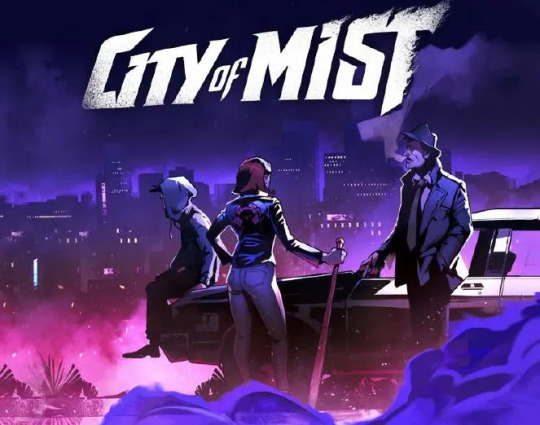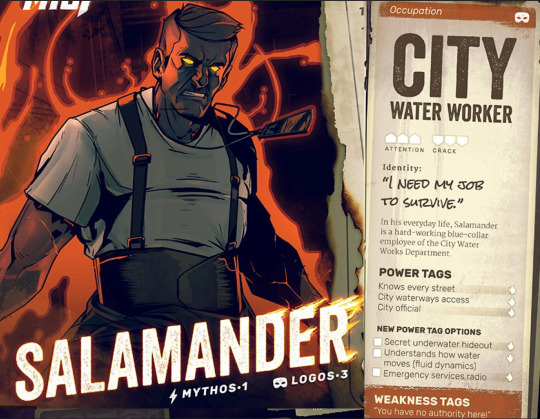#whyitfucks
Text
Why it Fucks: City of Mist's Themebooks

lateral character progression rules!
For those who don't know:
City of Mist is a 2017 Powered by the Apocalypse game from Son of Oak Games. Described as "set in a modern city where legends are real people. Heroes, tricksters, and monsters are reborn inside ordinary people, regular Joes and Janes, who gain supernatural powers connected to their legendary alter-egos."
The game focuses on telling stories that merge the fantastical with the grounded. Okay, if not grounded "lower altitude". It's the structure that you'd find any on detective/police/superhero procedural on TV. A detective game, even if those detectives are also embodiments of legends like Red Riding Hood or the Goddess Artemis.
One of the delightful things about it, and the reason behind this post. Is its use of what it calls themebooks. Every character at any given time is host to 4 themebooks. These can be powers tied to the myth you represent (Mythos) or some part of your mundane life (Logos). A Thor based character could have a "Relic" mythos for his hammer, and a "Defining Relationship" Logos with his old dad he cares for. They provide benefits to rolls when needed, have unique weaknesses and so on. Most importantly they have a mystery (for the mythos) and identity (for the logos) that tell us why we care or give little hooks. These themes get discarded and picked up throughout the game as you use them. Letting characters change without worrying about balancing difficulty.
As an example, let's look at one of the characters from the quick start, Salamander, tied to the myth of, well, the Salamander

One of his 4 playbooks is based on his job as a city water worker. We can see it has the identity "I need my job to survive" this tells us why it's important to him. I won't go in to much of the rest about power tags and such, instead looking back up to Attention and Crack.
Attention is like an XP track for that aspect of your character. There are a couple ways of gaining it like invoking your weakness tag for a penalty for example. You evolve it, expanding out the power/importance of the theme.
Whenever you take an action that goes against or would cause conflict with one of your themes it takes on a crack. Maybe Salamander has to leave his shift to go fight some bad guys, angering his boss. When the crack track is full, Salamander will lose that theme and trade it for another. Broadly, the themebook creation rules are written very generously. You can come in with a loose concept and they'll help you solidify it into something usable
Why It Fucks:
SO. What we have here are characters with 4 individual aspects that serve as side plots, mysteries or recurring beats that each have two directions they can go to (focus or conflict) that are, for the most part, entirely player directed as to which way they're going. Some MCs might twist arms for hard choices but at the right table that's just good drama baby.
This is a game that frequently references television procedurals or detective stories as big touch stones. What they've done here is empower not only the MC but the players to thread together their episodic adventures in a way that can also reflect consequence without making that player less "powerful" in game terms. Facilitating really dramatic change.
City of Mist is a game I'm quite fond of, it has it's issues but design like this is why I want to start writing these posts. Whatever I think about the game, this single little bit is SO! juicy to me.
8 notes
·
View notes